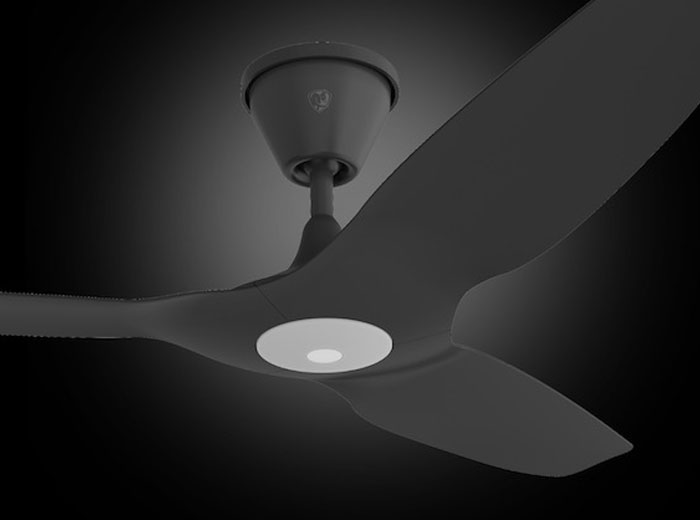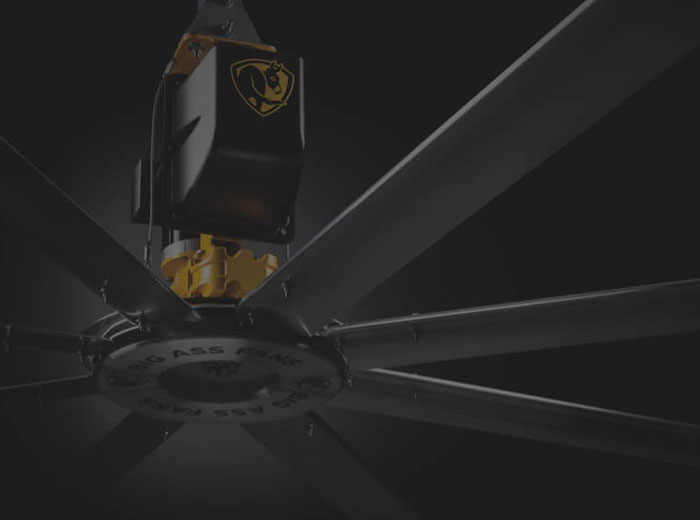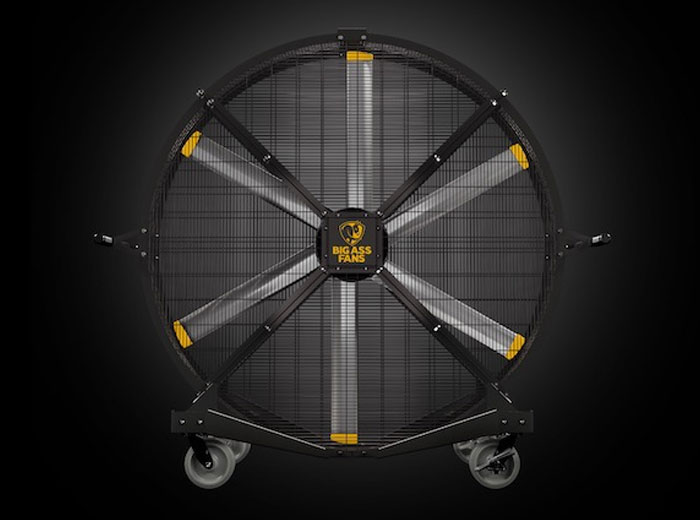High Volume, Low Speed (HVLS) fans are a game-changer for large spaces. From warehouses to gyms, these oversized ceiling fans provide efficient, consistent airflow without the noise and energy drain of smaller, faster-spinning fans.
What makes them unique is not just their slow rotation but the impressive size of their blades. Bigger blades mean smarter airflow, and in this article, we will explore the science behind why that matters.
How HVLS Fans Work
HVLS fans operate on a simple yet highly effective principle. Instead of spinning at high speeds like traditional ceiling fans, they rotate slowly but move a much larger volume of air.
This is possible thanks to their long blades, which push massive columns of air downwards. As the air hits the floor, it spreads out in all directions, creating a continuous, gentle breeze that can reach every corner of a room.
By circulating the air more evenly, HVLS fans prevent hot and cold spots and keep indoor environments consistently comfortable.
Why Bigger Blades Move Air More Efficiently
Blade size directly affects how much air a fan can move. Longer blades can displace more air with each rotation, covering a wider area.
This means the fan does not need to spin as quickly to achieve the same cooling effect as a smaller fan. The result is greater efficiency, less noise, and reduced wear on the motor.
A smaller fan might cool a limited section of a room, but a large HVLS fan can provide coverage for up to 15,000 square feet, depending on the model.
The Physics of Air Movement in Large Spaces

In tall or spacious buildings, heat naturally rises, creating warmer air near the ceiling and cooler air closer to the floor. This temperature difference can make heating or cooling systems work harder than necessary.
HVLS fans help by a process called destratification. In winter, they push warm air back down to floor level. In summer, they create a cooling effect by moving air across the skin and aiding evaporation.
The result is a balanced indoor climate where energy is not wasted trying to maintain comfort in only one area of the building.
Energy Efficiency Benefits of Larger Blades
Bigger blades mean each fan covers more ground, so fewer units are required. Fewer fans running at low speeds consume far less energy than multiple smaller fans running at high speeds.
This design also reduces strain on motors and lowers operational noise, which is ideal for environments like gyms, retail stores, and manufacturing plants.
In fact, businesses can cut their energy bills significantly by pairing HVLS fans with their HVAC systems. By improving air circulation, the HVAC does not need to work as hard, leading to savings that can reach up to 30%.
HVLS Fans vs Traditional Ceiling Fans
Traditional ceiling fans are designed for smaller rooms and personal cooling. They spin quickly, producing a narrow column of air that is effective only within a short range.
HVLS fans, on the other hand, operate slowly but produce a much broader airflow. They are also quieter, more energy-efficient, and require less frequent maintenance thanks to their lower operating speeds.
While a traditional fan might work in a living room, an HVLS fan is the clear choice for large-scale industrial and commercial applications.
Applications in Industrial and Commercial Spaces
The versatility of HVLS fans makes them ideal for many settings. Warehouses, manufacturing plants, distribution centres, airports, and large retail stores all benefit from improved airflow and temperature regulation.
In spaces where temperature control is crucial for comfort and safety, these fans can be the difference between a stifling environment and a pleasant workplace.
If you are considering installing one in your facility, you can explore industrial ceiling fan solutions that are designed for high performance in challenging environments.
Integration with HVAC Systems
HVLS fans complement HVAC systems by improving air circulation and helping maintain a consistent indoor temperature throughout large spaces. By gently distributing air, they reduce the strain on heating and cooling units, allowing HVAC systems to operate at lower settings while still keeping occupants comfortable. This synergy leads to significant energy savings and lower utility costs.
This integrated approach is in line with Singapore Standard TR 141:2025, which provides guidelines for hybrid cooling systems that combine ceiling fans with air-conditioning. The standard emphasizes the effectiveness of large-diameter fans like HVLS models in maintaining thermal comfort at higher temperature set points, thereby reducing dependence on mechanical cooling and enhancing overall energy efficiency
Choosing the Right HVLS Fan for Your Space
Selecting the right HVLS fan involves considering factors such as blade size, ceiling height, building layout, and intended use. A professional assessment can help determine the optimal fan size and placement, especially when aligning with local standards like Singapore TR 141:2025, which provides guidance on fan classification, layout strategies, and integration with air-conditioning systems for hybrid cooling.
For more details and tailored recommendations, you can visit the Big Ass Fans website to explore models suited for your specific needs.
Maintenance and Longevity Tips
HVLS fans are built to last, but regular upkeep ensures maximum performance. Cleaning the blades periodically prevents dust buildup, while checking the balance helps avoid unnecessary strain on the motor.
Scheduling professional inspections can also catch minor issues before they turn into costly repairs. For service or installation enquiries, reach out via the contact page to get expert assistance.
Conclusion
Bigger blades in HVLS fans aren’t just about scale, they’re rooted in science. By moving large volumes of air at low speeds, these fans deliver superior coverage, enhance comfort, and dramatically improve energy efficiency in expansive spaces. Their ability to work in tandem with HVAC systems makes them a smart solution for modern buildings seeking both performance and sustainability.
This approach is increasingly recognized in industry standards like Singapore’s TR 141:2025, which highlights the benefits of integrating ceiling fans into hybrid cooling systems. Whether you’re aiming to reduce operational costs, improve indoor climate control, or meet evolving energy benchmarks, choosing the right HVLS fan is a step toward smarter, more efficient building design.
FAQs
1. What does HVLS stand for?
HVLS stands for High Volume, Low Speed. These fans move a large amount of air at a slow rotational speed.
2. How do bigger blades save energy?
Larger blades move more air with each rotation, reducing the need for multiple fans or higher speeds, which lowers energy use.
3. Can HVLS fans replace air conditioning?
They do not replace air conditioning but can significantly reduce the need for it by improving circulation and cooling efficiency.
4. Are HVLS fans noisy?
No, HVLS fans are designed to operate quietly, even in large spaces, making them ideal for commercial use.
5. How high should the ceiling be for an HVLS fan?
Generally, HVLS fans work best in spaces with ceilings at least 4 metres high to allow proper airflow distribution.







